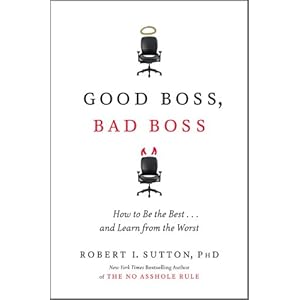What with all the old stuff, and all the pretty stuff, and all the beach stuff, we get a lot of tourists in these parts.
Oh, I’m well aware we don’t get the most – I’m a-guessin’ that California, Florida, and New York nab a few more.
But Massachusetts probably ranks higher, touristically speaking than, say, North Dakota or Mississippi. Not that there’s anything wrong with Fargo or Pascagoula, mind you. Just saying.
Within the state, I’d give the old one-two to Boston and The Cape. And having spent time in my sister’s town of Salem during the month of October, I’d also say that her city could give any tourist destination a run for its money in those days leading up to Halloween.
Tourists can be aggravating when you’re not one of them. My daily route takes me along part of The Freedom Trail, which guides walkers to some historic sites, like Paul Revere’s House. Our sidewalks are narrow, and I’ll probably die stepping out into the path of a duck boat full of tourists while trying to get around a knot of folks form Pascagoula and Fargo gaping at Old City Hall (it is charming) or trying to take a picture of Old South Meeting House, probably thinking it’s Old North Church. (Keep walking. Old North is not far from Old South. Old South Meeting House, that is. Old North is a bit more distant from Old South Church.)
Anyway, in order to expose tourists to some of the lesser sights in our state, kind of a spread the wealth across the Commonwealth, the state has published a list of 1,000 things worth seeing. They made sure along that way, I believe, that every one of our 351 cities and towns had at least one worthwhile something or other in it. (I didn’t do a nose count on this, but if you’re curious, the list is on Boston.com.)
Naturally, I was curious to see what they said about places I know about – and curious to see what was left off.
Take Worcester:
Bancroft Tower, Broad Meadow Brook Conservation Center, Higgins Armory Museum, Mechanics Hall, The EcoTarium, The Hanover Theater, Tuckerman Hall, Union Station, Worcester African Cultural Center, Worcester Art Museum, Worcester Hibernian Cultural Centre, Worcester Historical Museum
Now, most of the stuff I’ve heard of, I get. Not quite sure what the Worcester Hibernian Culture Centre is. Having grown up a Hibernian in Worcester, you’d think I’d have known if we’d had one. But since they threw in eating spots in some ot her towns – e.g., The Beachcomber in Wellfleet – I thought they might have listed a diner or two, or Coney Island Hot Dogs, if only for the sign. (Photo by James Suprenant.)
her towns – e.g., The Beachcomber in Wellfleet – I thought they might have listed a diner or two, or Coney Island Hot Dogs, if only for the sign. (Photo by James Suprenant.)
But I was really hoping that they’d have the completely obscure but wildly interesting site known to us as kids as The Hermitage on the list.
Not that it’s convenient or easy to get to – no Freedom Trail here – but if you don’t mind climbing through creepy, rocky, hilly woods in the middle of nowhere, it will take you to a completely eccentric little site that was a “must see” local attraction during my childhood.
“The Hermitage” was, we were told, a will carved in a large rock, by “the hermit”, leaving the property around it to God. Having finished his carving, the story went, William Hall donned a set of wire and wax wings, covered with chicken feathers, and tried to fly to God. Needless to say, he didn’t make it.
The Hermitage was the occasional family (other than the women-folk, who were doing the dishes) post-dinner destination on Thanksgiving Day. It was an uphill walk of a mile or so, then some scrabbling through the woods, until we got to The Rock. (Okay, you can’t quite see the handwriting on th e rock, but you get the point.) The picture comes from Daniel Boudillion’s interesting and detailed account of The Hermitage, which – in real life, if not in Rogers’ family life – was called Deed Rock (or, erroneously, Will Rock – so I guess we weren’t the only ones who thought it was a will). [If you want to read what the rock says, check out Boudillion’s site, which you should take a look at in any case.)
e rock, but you get the point.) The picture comes from Daniel Boudillion’s interesting and detailed account of The Hermitage, which – in real life, if not in Rogers’ family life – was called Deed Rock (or, erroneously, Will Rock – so I guess we weren’t the only ones who thought it was a will). [If you want to read what the rock says, check out Boudillion’s site, which you should take a look at in any case.)
Assuming that Boudillion’s rendition is more accurate than that of my father’s telling – and there is absolutely no reason to believe it’s not, especially if you knew my father – the real story is only a bit less colorful than the one about William Hall and his Daedalus wings.
Hall was the property owner, and he sold his plot of land on Rattlesnake Hill – yet another interesting hill name in my childhood ‘hood; the other was Dead Horse Hill – to one Solomon Parsons (yes, he of the Parsons’ Cider Mill family, where we bought our gallon of cider on Thanksgiving morning).* Parsons requested that the land be deeded over to God, and Hall commissioned some fellow to carve the deed in one of the boulders laying about.
Parsons had been heavily influenced by a preacher from Vermont who preached end-of-days, and, in addition to deeding the land to God, he also built a temple there.
While the world didn’t end as promised – good thing, huh? – Parsons continued to worship in his temple every Sunday until he died in the 1890’s.
Meanwhile – and here we get to the name The Hermitage – a nephew of Parsons’ built himself a shack on the property, and lived there for a while, a pond-less Thoreau, in the 1870’s.
So, while it was a bit disappointing to find that the wax-wing story was a canard, the true story is quite fascinating. (Again, go read Daniel Boudillion’s account.)
What I don’t know is whether the wax-wing story was particular to my family, or was the general neighborhood lore.
My father had grown up in the neighborhood. He and his sibs, and my grandmother, were greater walkers (not to mention talkers), so I’m guessing they trooped up to The Hermitage with some frequency. It was also a great spot for blueberrying, and we did our blueberry picking there each summer. (Nothing like those tiny little low-bush blueberries. Backbreaking work, but yum!)
While it would be interesting to learn whether wax-wing was a family or neighborhood story, I’m leaning family. My grandmother was a mythology buff, and the wax-wing sounds right up her alley.
Like my father, my grandmother was a superb story teller. The best stories, of course, don’t always adhere 100% to the truth, and there were plenty of things I was told as a kid that I now look back on and question. My favorite in this category has to be the story of Mr. Mur-FAY.
Mr. Mur-FAY was a very pleasant looking old geezer, always well turned out - a nice grey homburg and overcoat in the winter – who walked everywhere. Not in itself that odd – I knew plenty of people who didn’t have cars. They walked or took the bus. Mr. Mur-FAY didn’t live close enough for me to know him personally, but I certainly knew who he was.
According to my grandmother, Mr. Mur-FAY was a left-hander, i.e., someone who had fallen away from the Catholic Church. Further, Nanny told us, after leaving the Church, he had changed the pronunciation of his last name from Murphy to Mur-FAY. Everyone knew, of course, that people named Murphy were Catholic, so the nefarious Mr. Mur-FAY rebranded himself so that no one would suspect his Catholic origins.
Well, somewhere along the line, I figured out that there was probably no one in Mr. Mur-FAY’s family who would have had an inkling of what we were talking about, since they, no doubt, had always called themselves Murphy.
Ah, Worcester.
Anyway, while I’m disappointed to see that The Hermitage didn’t make the top 1,000 list, and while I’m disappointed to learn that the wax-wing, fly-to-God story was a myth, I have decided that I’m going to put a visit to The Hermitage on my bucket list.
I am counting on a sibling, or my intrepid cousin Barbara and her husband Dick – my only remaining Worcester-area relations – to accompany me there.
Any takers?
------------------------------------------------------------------
*This must make it sound like I had some bucolic childhood, a notion at odds with my claim to being a city girl. The neighborhood I grew up in was intensely city: small houses and three deckers clustered cheek to jowl, with an ethnic intensity you just didn’t find in suburban Beaver Cleaver-ville. At the same time, it was on Worcester’s fringes, with lots of woods and ponds, and even a tiny, goofball farm just down the street.


![[thorpe1]](http://si.wsj.net/public/resources/images/OB-JH403_thorpe_D_20100719160404.jpg) k by the way, in case it ever comes up in conversation. It’s Lenape for “bear mountain”. Thanks, Wikipedia.)
k by the way, in case it ever comes up in conversation. It’s Lenape for “bear mountain”. Thanks, Wikipedia.)


 mmmm. Okay. I did a bit more “research”, and found stuffed Trigger.
mmmm. Okay. I did a bit more “research”, and found stuffed Trigger. 

 until the 25th century (if then). But I do have to ask myself who wants to change and wash chicken diapers. (Maybe there’s a diaper service. If not, there’s a dream of an entrepreneurial idea for you.)
until the 25th century (if then). But I do have to ask myself who wants to change and wash chicken diapers. (Maybe there’s a diaper service. If not, there’s a dream of an entrepreneurial idea for you.)![[SB10001424052748703636404575353393343953142]](http://s.wsj.net/public/resources/images/OB-JE012_SBchic_D_20100707164302.jpg)
